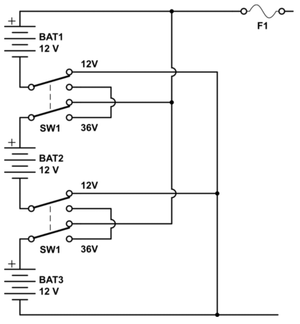Link: Slower and slower
Link broken? Try the Wayback Machine.
Corporate attitude: Customers stand in line, and wait on the company — not the other way around. “Personal” service means “the machine has recorded your account number.” Interactivity means “press 6 for more options.”
I’ve got better things to do on a sunny Sunday morning than wait for my bank statement to appear on-screen, but that’s just what I’ve been doing since my bank, after getting swallowed into the maw of another interstate banking conglomerate (Washington Mutual), pulled the plug on PC banking through Quicken. OK, so the new Web interface is pretty easy to use, and lets me access my account information and even make transfers and payments from anywhere in the world. But:
It’s slow: Even on a fast connection, I often wait one or two minutes just to get from the sign-on screen to my account detail screen. And that’s not counting the graphics-heavy introductory splash screens I have to wade through to get to the login screen.
It’s impersonal: As far as Washington Mutual’s Web site is concerned, I don’t have a name, I don’t even have an account number: I’m just a card number. I’ve got to type in all 16 digits of my ATM card, plus the 4 digits of my PIN, just to sign on to the system. My wife has to use my ATM card, not her own, even though she’s just as much an owner of the account as I am.
It’s a standalone system: If I want to record the latest transactions in Quicken, I’ve got to manually retype them from the Web page. That means carefully resizing my browser window and Quicken so I can see both, then scrolling through 2 or 3 transactions at a time and carefully typing the data from each into Quicken — after checking the Quicken register to make sure I haven’t already recorded them. This system in effect turns my computer, an otherwise fairly capable piece of hardware and software, into a typewriter.
Of course I’m picking on this bank because I’m irritated by their lame Web account system. (But then, I’ve never yet met a bank whose information systems actually served me well.) But Washington Mutual’s Web site is symptomatic of a larger trend in computing: Over the past few generations of applications, we’ve been consistently trading speed of use for speed of learning, efficiency for convenience.
Lotus 1-2-3, that much-maligned DOS-based spreadsheet, may have been difficult to learn, but it actually had a very high degree of *usability* once you learned how to use it. 1-2-3 pros could zip through a spreadsheet, updating data and formulas, at blinding speed, because the program’s command keystrokes quickly became programmed into their “muscle memory.” These spreadsheet jockeys could play 1-2-3 like it was a musical instrument.
Microsoft Excel, by contrast, is much more learnable — you just click where you want data to go, and use the mouse to select formulas and formatting. Easy, right? But for day-to-day usability, Excel suffers in contrast to 1-2-3, because its keystroke shortcuts are not as consistently implemented nor as easily used. It takes time to reach from the mouse to the keyboard and back. Excel, however, won most “usability” tests because those tests were actually measuring applications’ *learnability* — how efficiently a novice user could navigate the program’s features in the first 2 or 3 hours of use. No one bothered to measure how efficiently users could work the programs after a week, or a month, of use.
Now we’re in the era of Web applications, which are even easier to learn than Windows apps. You just point with the mouse cursor and click. But usability? Forget about it: There are no keyboard shortcuts in Web applications. Latency, thanks to bandwidth constraints and Internet traffic, will always be a problem. And data integration (say, between Washington Mutual’s Web site and my Quicken files) is increasingly difficult, in part because the Web’s openness means there’s a wider variety of stuff out there to be integrated with.
Which leads me to wonder: What’s next? Thought-controlled interfaces, perhaps, which are even easier to learn than mouseclick-driven Web apps — but which, in turn, are ever slower and more cumbersome for actually getting work done.
Meanwhile, corporations think they can mollify us with overused canards like “one-to-one marketing” and “personal service,” while forcing us to slog our way through the HTML equivalents of voice response menus. This is progress?
———-
COME TOGETHER, OVER ME — and my new commerce site, says Paul Allen. He’s backing Mercata, a new e-commerce venture that consolidates ad-hoc blocs of consumers to secure volume discounts on consumer goods [1, 2]. Unlike Accompany, which I wrote about last month [3], Mercata is not focusing on computer hardware — the margins are already too thin in that business. Instead, the company will offer consumer electronics and other luxury goods. But the strategy might disgruntle the traditional distributors of such products, according to PC World [4].
This model represents a far more promising approach to e-commerce than online auctions. Auctions drive prices up, but tend to have small volume. The co-op buying approach of Mercata and Accompany drive prices down while driving volume up — which benefits both consumers and producers of goods. Yeah, that might piss off traditional distributors, especially if the model leaves them out of the transaction. Of course, distributors could choose to become suppliers to these co-op channels and use them to increase their own sales.
[1] Buying bulk for the little guy
[2] Mercata
[3] Consumers, unite! Use the Net to drive down prices of goods

